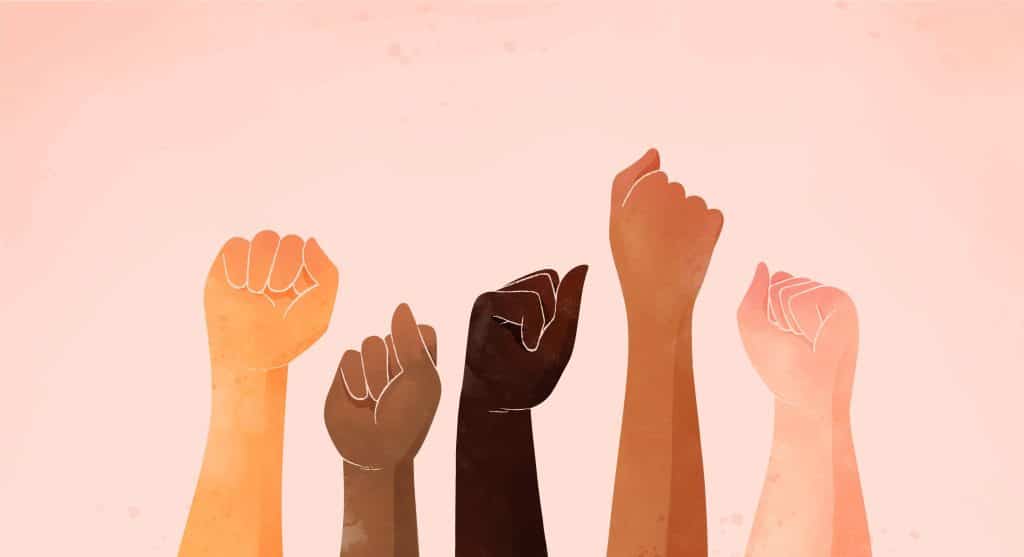Every day numerous reports in the media highlight that some organizations are attempting to appear more socially and environmentally conscious than their rivals by greenwashing , woke washing or rainbow washing their activities. These concepts are quite alike as they try to mask the ‘bad’ elements of a product by fabricating a facade of ‘good’.
- How many washings do we have to hang out?
- What Is Greenwashing
- What Is Woke Washing
- Other nuances of washing. Purple washing
- Rainbow washing also known as Pink washing
- Authentic brand activism or the nth kind or washing?
- Washed outside and “unclear” inside: the contrast between external appearances and internal reality
- Six essential steps to help companies embed authenticity and genuine purpose into their organisation
- Looking for any support to avoid falling into the greenwashing or any-other-kind of washing trap?
How many washings do we have to hang out?

As people globally become more conscious of how their everyday decisions and buying habits influence the environment, many companies have also started adopting a more sustainable approach to win over customers.
It is theoretically a good move, but many organizations have just put up a mask of sustainability while they carry on with only one aim: relentless pursuit of profit.
That’s why in the current era of overconsumption, it is easy to be suspicious when companies claim to be ‘contributing to the greater good’.
The truth is that we are all purchasers making a wide range of buying choices on a daily basis. For many of us, those choices contain concerns about people and the environment. Businesses have perceived this and are perfectly aware that the ethical consumer is willing to pay a higher price for sustainable products. While many have done the right thing and enhanced their production process, others just craft a narrative to draw in high-paying customers. Therefore, the popularity of greenwashing and all the other nuances of “washing” has been on the rise.
Although some of these terms have been around for quite a while, others are newer. Let’s see them in more details.
What Is Greenwashing

Greenwashing is a deceptive marketing tactic used by companies, brands and even prominent individuals to appear as if they are sustainable, eco-conscious and climate aware. This tactic is often used to create a false sense of sustainability that can mislead conscious consumers into believing that the company or brand is ethical. As ethical consumerism continues to rise, it’s important for companies and brands to be honest about their environmental practices and policies in order to gain trust from their customers. Greenwashing can have serious consequences for businesses as it can damage their reputation and lead to loss of customers.
Example of Greenwashing
Claims about plastic packaging being eco-friendly made by big brands, including Coca Cola and Unilever, are misleading greenwashing, according to many reports. Not too long ago the drinks giant rolled out 100% plant-based plastic bottles to supposedly reduce the carbon emissions from their packaging. A cool idea but let’s not forget that Coca Cola is the world’s biggest polluter of plastics and this “BioPET” stuff isn’t biodegradable! Food for thought over there?
Companies’ greenwashing has become a “many-headed beast”
According to a new report from Planet Tracker, companies are engaging in increasingly refined greenwashing activities. From misrepresenting an individual action or policy as climate-friendly, to obscuring the true nature of their business with rhetoric, these tactics have become increasingly sophisticated and difficult to detect. While it is important to note that greenwashing is misleading but not always illegal, investors should remain wary and ensure such deceptive tactics do not go unnoticed. There remains a great deal of responsibility upon both regulators and corporations in this arena if significant progress is to be made.
What Is Woke Washing

If you’re unfamiliar with the term Woke washing, think of it as Greenwashing’s cousin. Woke washing is the act of using social justice themes in marketing campaigns to create a positive image for a company without taking any meaningful action. This practice has become increasingly popular as companies try to capitalize on the growing trends of purpose-driven consumerism. While some companies may genuinely support social justice causes, others use woke washing as a way to make their brand look good without doing anything concrete.
Examples of Woke washing
With the “Real Meal” campaign, Burger King tried to bring attention to mental health and make it more mainstream. Although it was pretty viral on social media, the fast-food chain got some heat from people speculating that they didn’t give employees any professional psychological support or wage that would let them to follow a therapeutic path on their own initiative.
Similarly, L’Oréal came under fire in 2020 for woke washing by eliminating terms like “lightening” and “whitening” from their labels – people thought it was just a facade action since not too long ago, the same company had cut ties with a testimonial who expressed their support for Black Lives Matter.
Other nuances of washing. Purple washing

The practice of Purple washing has become increasingly common in recent years, with many companies and politicians using gender equality and feminist rhetoric to promote their brand. Despite this, there is still much progress that needs to be made in terms of dismantling gender stereotypes and creating genuine support for women’s social causes. It is up to companies and brands to make sure they are not engaging in purple washing but rather taking meaningful steps towards achieving true gender equality.
Example of Purple Washing
A few years ago, Audi of America made a commitment to pay its employees equitably, regardless of gender. Last year, they demonstrated their dedication to this cause by spending millions on a Women’s Day spot during the Super Bowl. Despite appearing progressive, it was brought to Audi’s attention that their executive team had no female representatives. To truly commit to equitable treatment and payment, Audi must unite their words with purposeful action by hiring qualified women into the upper echelons of organization.
Rainbow washing also known as Pink washing

It’s a term used to describe the act of companies or brands using the language and symbols of the LGBTQ+ movement to market their products or services, without actually supporting the community or its causes. Rainbow washing has become increasingly popular in fashion, where brands have been seen using the pride flag symbol and rainbow colours to promote their products. While this may seem like a positive move towards gender diversity and LGBTQ+ rights, it often just serves as a smokescreen for companies who are not really committed to making any real changes. It’s not enough for a company to only demonstrate their support for the LGBTQ+ community once a year with the Pride; if their commitment isn’t rooted in shared values, their pretended allegiance will inevitably be revealed. Moreover, businesses that exploit minority groups for profit without engaging with their experiences, worries, necessities, and lifestyles are being hypocritical and unjust.
Example of Rainbow Washing
It has certainly been a controversial year with regard to the actions of certain public figures and large organizations. For example, Elon Musk tweeted about Tesla’s high-scoring record on corporate equality, having previously mocked the use of inclusive pronouns. This only served to cause further outrage due to its inconsistency. Furthermore, FIFA adopted a rainbow logo and posted a message inviting the LGBTQIA+ community to find out “how FIFA is working to ensure Qatar 2022 will be a celebration of unity and diversity” despite many reports detailing Qatar as one of the most oppressive countries for gay people.
Authentic brand activism or the nth kind or washing?

The mantra that is becoming increasingly more common is that businesses can no longer remain silent. They must take a stance. The onus to have an opinion on the most significant matters of public concern is mainly due to consumer requirements and, just as significantly, the way consumers make their buying decisions these days. Evidence from research supports the link between company social responsibility efforts and more brand recognition, as well as a higher likelihood of buying. This is especially true for Millennials and Generation Z, who pay attention to how a company’s mission and values align with their own worldview and values.
However, it is also plausible that what appears to be authentic brand activism could be an attempt to keep up with the times, to make one’s presence known, to capitalize on the news: in a few words, the nth case of greewashing, woke washing or rainbow washing! While being seemingly devoted and moral, companies still must make a profit and defend their own interests? Nevertheless, those who try their hand at the facade of brand activism frequently forget that the corporate world has become markedly more transparent and that, due to the media’s focus on what happens within the industry, it is almost impossible to think that there are corporate secrets that will go unnoticed.
One must carefully consider the potential advantages of utilizing brand activism against the potential risks of not being truly genuine. For example, if it is revealed that someone is merely leveraging the LGBTQ+ cause to gain recognition, without actually practicing or endorsing non-traditional sexual orientations or behaviours, then there could be serious repercussions to their reputation.
Marketing is good only if there are genuine values behind
The more educated customers become about greenwashing, woke washing or other-kind-of washing—and the more they call it out—the less opportunity unscrupulous companies have to cash in on unethical marketing. It’s essential to point out that marketing, in general, is not always a bad thing. In fact, it can be a powerful and useful tool to bring attention to social injustice. Representation is key! We appreciate seeing the rainbow decorations in store windows during the Pride month – it does spark people’s awareness. Nonetheless, don’t we need to show reality instead of an idealized version of society? What good is there in brands that promote female empowerment when women still get paid less? Can an ad that supports LGBTQ+ rights really make a difference, if the community is scared to come out at work? And what is the benefit of using stereotyped communication if it is not applicable to internal business practices?
Visibility is one thing, but we need to do something more meaningful to help break the boundaries of traditional, outdated systems.
Washed outside and “unclear” inside: the contrast between external appearances and internal reality

According to recent research 90% of executives say that sustainability is important. The problem is that only 60% of organizations have a sustainability strategy and it is not being implemented. Why is this happening? Maybe management really doesn’t believe in the power of sustainability to generate returns? Or is there a lack of competence from Board Members to all business areas? Or is sustainability marginalized from business priorities and poorly communicated internally, with employees unaware of the company’s sustainability strategy and values? What is certain is that advancing sustainability in an organization can come with some challenges such as weak board commitment, low accountability, a sustainability team without authority to execute initiatives, a shortage of talent. It can therefore happen that organizations, in their intent to demonstrate that they are sustainable towards all stakeholders, adopt mere communication marketing actions without having a real purpose behind them.
A few research found that when an organization is hypocritical about its social responsibility employees will be very sceptical. When employees detect a disconnection between what is being communicated externally on company’s sustainability ambition and what is happening inside the organization, they feel disoriented and not engaged. We could talk about Managers that don’t lead by examples cause employee cynicism and loss of trust in the organization.
Six essential steps to help companies embed authenticity and genuine purpose into their organisation

The power of purpose goes much further than simply initiating a one-time communication campaign that expresses the company values. To make sure that organizations are genuinely committed to sustainability, they must strive to bridge the gap between what they say and what they do. A great beginning would be to abstain from concocting vain publicizing efforts. People don’t purchase brands, they purchase stories. It’s the companies’ duty to make sure that all facets of their business are in line with the purpose which those stories are associated with. Purpose must be assimilated into the workplace culture and should be woven into every aspect of the organization’s operations. It should influence how organizations interact with audiences and dictate who and how they do business.
To fully incorporate purpose into organizations, six key steps must be taken:
- define a clear purpose and use it as a North Star to ensures any business decision, big or small, is guided by what you stand for and what you believe in
- identify lead storytellers. Effective leadership requires public and visible assertion of company values. Leaders should inspire their peers and colleagues to understand and live out the purpose of the business, reassuring faith in what the company stands for. They should build pro-social or pro-environment behaviour into their corporate culture and day-to-day operations. When effectively executed, purpose-driven leadership is both meaningful and moving
- make it meaningful to employees. For your business to thrive, it is essential that employees understand and relate to the purpose. A solid internal communications campaign should include a chapter dedicated to individual connection. To motivate and inspire employees, managers can celebrate personal achievements and link them to the company’s purpose. Such an approach will provide Gen Z with meaningful experiences that go beyond salary alone. By connecting the personal with the professional, employees may begin to see the bigger picture in a much more meaningful way.
- reward success with stories connected to this purpose. Rewarding employees for their efforts that align with your business purpose is vital for effectively embedding said purpose into your organization. To accomplish this, start by determining KPIs and team goals in line with the stated purpose. Then, create a plan to recognize and reward employees who reach these milestones. Celebrating individual wins can incentivize more purpose-driven behaviour within your organization.
- review processes in line with your larger goal. Businesses that align their practices, processes, and systems with their purpose can attain substantial rewards. As you put your purpose into practice, assess your current company processes to identify those that need to be developed or modified. Taking action to signify the commitment to the new purpose demonstrates how essential it is and may even encourage positive changes from employees, investors, customers and suppliers. Embedding a purpose into an organization’s foundation is an endeavour that necessitates determination, clear guidance and execution. Companies reaping the emotional, financial and cultural gains of being committed to their values makes this question even more compelling: how soon can we get started?
- Avoid excessive self-promotion. Failure to do so can lead to increased scrutiny and criticism. And being accused of greenwashing or any other kind of washing can become very easy!
Looking for any support to avoid falling into the greenwashing or any-other-kind of washing trap?
That’s what we’re here for.
Our platform allows organizations to connect and align their workforce with purpose, goals, and KPIs. We provide a sustainability adoption methodology which enables companies to communicate sustainability ambition while securing employee buy-in. Through employee mobilization and collaborative behaviour adoption, companies can create an authentic social value narrative that resonates with stakeholders. Our platform also provides data to prove that employees’ commitments and actions are meaningful, helping organizations foster transparency and integrity while avoiding the greenwashing trap.
Get in touch and let’s have a conversation.
Read more:
Discover how we helped companies to communicate their sustainability efforts
Brand Activism: How Taking a Stand Can Help Build Your Brand




0 Comments